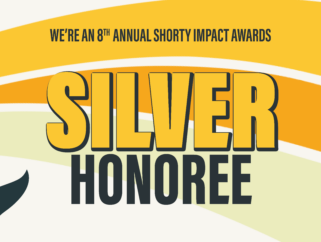MIND YOUR LANGUAGE: The differences in group communication between young people in Kenya and Tanzania [ARCHIVE]
- 4 Apr 2016
Aid workers tend to segment audiences as little as they can get away with – people living with HIV, farmers, youth. They come up with broad plans to address these people and move on. Well Told Story’s recent experience of launching our Kenyan Shujaaz multi-media platform in Tanzania has shown us quite how wrong that approach can be.
Several weeks ago, we published a post here discussing the characteristics of an impactful conversation among Kenyan youth. While these insights may be helpful to communicators in Kenya, a recent round of field research with young Tanzanians has highlighted some important differences between young people in the two East African neighbours. Tanzanian young people are radically different from their Kenyan peers and to reach them effectively tactics must be modified and adjusted, not just duplicated across borders.
Different youth group dynamics
Just like in Kenya, young Tanzanians tend to interact in groups. Yet the group dynamic in the two countries is dramatically different. In Kenya, a group assembles around a leader, a person with ideas and the energy to push the group forward and assign tasks to group members. Without a leader, a Kenyan group is a collection of individuals without a goal; with a leader, a Kenyan group becomes a collection of individuals temporarily unified around one person and his/her idea(s) and a plan for action (a form).
A Tanzanian group is a coherent unit that makes decisions and acts as a whole. Different members can take leadership in different activities, yet leadership is not as important as the homogeneity within the group. In Tanzania, a group serves as a “safe space” for young people to discuss important issues and find solutions, some of which might be embarrassing or illegal. The unity of the group is the foundation of deep trust among the group members and the key to the group’s viability. It takes some time for the group to develop this internal coherence; so all group members guard it closely in a number of different ways. These include the use of metaphoric language (that is not easily deciphered by outsiders) and protection from “misfits” – people whose opinions are different from or challenging to the group (see below).
Different views on group inclusion/exclusion
The nature of youth groups in Kenya is quite fluid as they organize around a leader for a specific activity. Once the activity is done, the group might fall apart and its members join another group for a different activity. Hence, the notion of those “included” and “excluded” is fluid as well – people can be excluded based on a topic of conversation or the goal of an activity. For example, a girl might not be part of a group committing a robbery but she might be brought in to give advice on relationships. The only constant is that adults are excluded.
Adults are similarly not welcomed in Tanzanian youths groups, but in Tanzania ‘excluded’ is a more specific concept defined by a more rigid logic. Because of the importance of group coherence, the group protects itself from people who might be threatening (or are perceived as threatening) to its unity:
People who have opinions different from the group – such people might bring confusion and/or conflict to the group and cause its demise;
People whose social status does not match the status of the group – If “misfits” are lower in their social position than the group they will damage the image of the group; if “misfits” are better off they might claim a special status and undermine the homogeneity and trust within the group;
Stigmatized individuals – as a traditionally closely-knit community, Tanzanian youth are as suspicious of any physical differences as they are of differences in opinions. Stigmatized people – those with unusual features, diseases or traits (e.g. albinos) – damage a group image in the same way as people with lower social status and hence they are commonly rejected by a group.
Adults – many see adults as a nuisance not because their experience is different from that of the younger population but because adults tend to criticize youths without suggesting alternative solutions or providing a positive example through their own actions and lives. So adult criticism is seen as ungrounded and adults are rejected by youth groups.
Aside from those clearly excluded, each group has a circle of peers – youth of a similar age, from the same locality/neighbourhood – who might or might not belong to a different group. Members of a peer circle are not as trusted as the group members but they can occasionally participate in low-importance activities/conversations of the group (i.e., compulsory school activities or clubbing/entertainment).
The layered structure of Tanzanian youth interactions defines with whom youth have impactful conversations.

Different reasons for and different intensity of peer pressure
Tanzanian youth groups are more stable than Kenyan groups: a young Tanzanian can (and does) stay with their group until their life circumstances change – they graduate from school, enter college, move to a different place, etc. Hence, groups provide greater safety nets and a stronger feeling of belonging for young Tanzanians compared with young Kenyans. While such stability plays well when protecting young Tanzanians from crises (including emotional crises and vulnerability to radicalization), a group can also be an impediment to individual and community progress.
In a fluid, often short-living Kenyan youth group, peer pressure has an individualistic spin to it: it is a bragging contest. A young Kenyan has to demonstrate that they are not just “in the trend” but are doing better than their peers: his/her spendings are bigger, nude pictures are more provocative and are shared more widely, raves are crazier, dance moves are more complicated, and so on. Kenyan peer pressure allows young people to decide if they want to be leaders or followers of the current trend or outsiders launching a different trend.
In a tightly-knit Tanzanian group, an individual cannot try new ideas, norms or behaviours without the approval of the entire group. Otherwise, he or she risks being excluded as a “misfit” and will have to struggle before (and if at all) they find another group. This fear of losing group membership creates an intense peer pressure that leads to the absolute compliance of group members to the group rule, as well as to a high-level of self-control by each individual member. Such peer pressure might prevent a young person from taking a wrong path in life. But it can also serve as a serious impediment to the development of an individual (especially for those belonging to rigid or illicit groups) as well as the barrier to positive normative and behavioural shifts in a larger community.
So, what does this mean?
There are several lessons that can be immediately derived from the key differences between Kenyan and Tanzanian youth groups:
A youth program successful in Kenya cannot expect to be successful in Tanzania by just “transplanting” its activities. Every aspect of the program has to be reviewed in the light of the cultural differences discussed above (as well as others) and adapted to Tanzanian youth culture.
New ideas, especially ideas related to sensitive and/or taboo issues (e.g. reproductive health, agriculture, drugs and crime) have to be introduced to Tanzanian youth in a group setting, for example, in a reading club or a street festival. This will allow all members of the group to receive the new information simultaneously (as opposed to one member introducing it to the rest of the group), discuss the idea as a group and make an adoption decision together. This approach will help increase the chances of group buy-in, and once the group does – the chances of successful implementation of the idea.
By extension, it is important that new ideas and activities by design assume the engagement of the entire group not an individual.
Finally, it might be rewarding to engage with young Tanzanians in the green circle of the “group’s friends” – some of whom are in-between groups or are expelled from their previous group and are in search of a new group. Locally focused events from reading and volunteer clubs to block-parties and festivals provide a great opportunity to group these young people around a new positive idea, thus benefitting both parties – the youths outside a group and international developers interested in impacting those youths’ lives.
What causes these differences is unclear – could it be Tanzania’s experience of state-imposed family hood – Ujamaa – compared to Kenya’s extreme embrace of capitalism? What is clear is that encouraging behaviour change in young people is not easy and that cookie cutter approaches don’t work and may even cause harm.
Anastasia Mirzoyants, Head of Knowledge & Learning at Well Told Story





